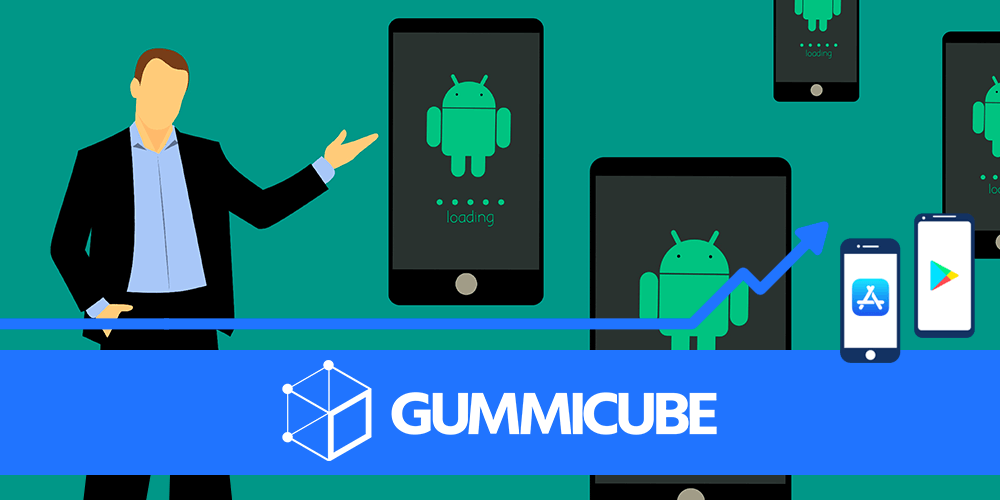
Posted on May 30th, 2018
A common phrase known around the world is “there’s an app for that.” If there’s an app for nearly every need, why aren’t more companies making mobile apps? Well, big-name businesses like Starbucks, Macy’s, and more have successfully shifted their business platforms to incorporate mobile. Thanks to their efforts, they’ve managed to capitalize on m-commerce, which alone is forecasted to reach $284 billion (roughly 45% of total US e-commerce) by 2020. Businesses big and small recognize that having a website alone is no longer enough. Apps are the future of communicating and engaging with customers, so businesses should start incorporating mobile apps into their business models sooner rather than later.

Posted on May 25th, 2018
Google has been quietly removing the feature graphic from their Google Play Store, as seen by devices running the latest OS and play store versions. While the update began in late April 2018, more users are reporting that the feature graphic has been removed completely. While it’s uncertain if all Android devices are affected, it’s presumed that the change will soon appear. Since the feature graphic is essential for converting users, its loss will have an impact on all developers. How should they update their ASO strategies to prepare for the change? What’s the Impact? The feature graphic plays a vital role in driving user downloads on the Google Play Store. Our internal research has shown that the feature graphic accounts for up to 30% of all conversions. The removal of the feature graphic could have a detrimental effect on apps that do not update their other creative assets (icon, screenshots and preview video) accordingly. In the absence of the feature graphic, the role of converting users will heavily rely on the app’s screenshots and video, which now position higher on the screen to compensate. Additionally, to fill the gap left from the removal of feature graphic, Google has lifted the restrictions on screenshots sizes, giving developers leeway to add landscape or portrait images of any size to their Google Play Store product page.

Posted on May 23rd, 2018
Have you ever wanted to try an app before downloading it? Developers are constantly looking at new strategies and tools that will help them improve conversion and retention, but many suffer from users that download their app and either open it once and uninstall, or never even open it.

Posted on May 19th, 2018
Not all users provide the same value to an app. Multiple casual users provide different benefits than a few dedicated ones who constantly use the app, for while all users are important, the ones that continually use it provide more to an app’s success than those who just download it.

Posted on May 16th, 2018
Visual assets are an app’s key tool for increasing conversions in the app stores. The icon is the first thing a user sees when browsing through the Google Play Store and screenshots are important to call out the apps core features, but the feature graphic is equally important. For Google Play, the feature graphic should not be underestimated. While icons initially attract users, the feature graphic is

Posted on May 12th, 2018
Google I/O 2018 concluded May 10th, following several exciting days at the tech company’s annual conference. There were a number of announcements, including the release of Android P Beta, new information about Instant Apps, two new software tools for apps and more. Here are a few key highlights that users and developers should know: Android P As many expected, Google focused on the new Android P operating system and how it will help users more than past operating systems. Google is introducing new AI changes, including a system that uses gestures and swiping to view apps. The upcoming OS adds several new features, such as a new Android dashboard that lets users know how much time they spend on individual apps. If users want to reduce their usage, a new “Shush” feature allows them to gray out certain apps. They can also automatically set their device into Do Not Disturb mode by placing it face-down. The Android P OS is not yet released, but the Beta is available for anyone with a developer account and Pixel device.

Posted on May 8th, 2018
With Google I/O taking place from May 8 to May 10, technology enthusiasts and developers alike can expect major updates and new additions to Google products and services. If you can’t make the massive conference, Google will be providing ways to follow events and announcements online through live streaming sites like YouTube, Twitch and Mixer, as well as the Google I/O conference app. As Google Play Store updates are released throughout the year, changes related to App Store Optimization (ASO) at Google I/O tend to be light. However, it’s still an important conference for the future of app development, as well as emerging technologies. Here are a few things you can expect at Google I/O 2018:

Posted on April 18th, 2018
Marketing an app exclusively within the Apple App Store or Google Play Store will severely limit its visibility. A good marketing strategy has to draw users in from a wide range of sources, including both paid ad campaigns and social media. As one of the most frequently used websites and phone apps, it’s no surprise that Facebook ads are used by 93 percent of social media advertisers, and 62 percent of marketers consider it to be their most important platform. Utilizing Facebook as a marketing platform can help mobile apps grow significantly.

Posted on April 14th, 2018
Google has launched yet another set of updates for its Play Store with changes that could

Posted on April 12th, 2018
Who among us hasn’t clicked on an ad for an app while scrolling through Facebook, Instagram or Twitter? Very few social media users can honestly say they haven’t, which is why more and more Advertisers are turning to it to capture the attention of potential users.

Posted on April 6th, 2018
Users are the undeniable backbone of any product’s success. While it is best to develop a commodity that is well-received by users, it is just as crucial to keep users engaged and happy so they are actively using that product. To stay ahead of this, developers and companies maintain consistent Reputation Management strategies using user feedback to ensure that the needs of their customers are heard and to keep them coming back. But what happens if there’s an update or new product that isn’t well-received? If the users are unhappy and the developers stand their ground, can a company, product or app still find success? Let’s look at the power users have on apps, developers and companies and whether they were able to force change.

Posted on April 4th, 2018
Marketing mobile apps can seem confusing if you’re not sure where to begin. Traditional methods, such as Google UAC and Apple Search Ads, are a great way to get started, but they’re not the only way. In fact, many developers find they’re not the most effective, either.













